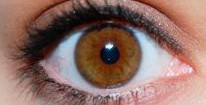So now I am reasonably sure I have a shot at becoming a test subject. Never really believed one of my greatest ambitions in life was going to be to become a lab rat. However, I can assure you I had ambitions to be the best damn lab rat Wills Eye has ever seen. My visual gains will be extraordinary! I will become spokes-rat for the program and travel around the area doing the ‘rubber chicken’ circuit. I will be brilliant. (Did I happen to mention I have no problems generally with my self-esteem? Perhaps…can you spell megalomania?) I even designed my t-shirt. It includes a drawing of a cute little mascot that will, of course, represent the hospital for decades to come.
I will be the best damn lab rat Wills eye has ever seen! I’ll become spokes-rat for the program and travel around the area doing the ‘rubber chicken’ circuit.
I did continue my research. I wanted to know what exactly I was getting into. I’m not one for invasive procedures or even for a lot of ‘doctoring.’ However, assuring vision for myself in the future tended to trump all other considerations.
Although Regillo tended to gloss over some of the more gory and unpleasant details, I wanted to know. My source was the 2015 Lancet article on the Phase 1 experiment.
Let me go off on a tangent here for a moment. Until I got into this, I had no clue what happens in clinical trials. Short tutorial if I may: clinical trials are made up of four phases. The first phase is a safety and tolerability phase. Essentially, the researchers are looking to make sure that nothing serious goes wrong. They want to make sure that no one has an allergic reaction or grows stray body parts where they should not be growing.
In Phase 1 they want to make sure no one has an allergic reaction or grows stray body arts where they should not be growing.
After Phase 1, the efficacy experiment starts. They want to see how their treatment actually works. Does it do what they claim it will do? They also start messing around with different independent variables to see what works best. In the study I am trying to get into, for example, they are comparing different immunosuppressant drugs to see which one works best. In other Phase 2 experiments they compare slightly different operation procedures or any more of the dozen of different treatment variables. All Phase 1 studies use only a very small number of people, Phase 2 studies use many more.
In Phase 2 they want to see how their treatment actually works.
As I understand it, Phase 3 studies are essentially larger variations on Phase 2 studies. Techniques and procedures are refined and the subject pool is made up of hundreds or even thousands of people.
In Phase 3 they perfect the techniques and procedures on more people.
Phase 4 is sort of like an off-Broadway show or traveling company. Instead of just being administered by people at the experimental sites, the procedures are now made available to other professionals to try. Reports are made back to the original team. By this time, the subjects can number in the thousands. Once a procedure gets through Phase 4, it is ready for prime time. If good enough, it can become standard procedure around the globe.
In Phase 4 they make their procedures available to other professionals to try at other locations.
Written February 2016. Updated 2018.

